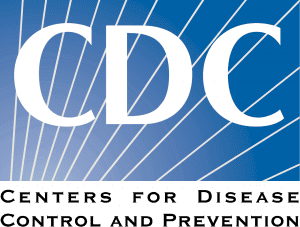- Trends in Disease Severity and Health Care Utilization During the Early Omicron Variant Period Compared with Previous SARS-CoV-2 High Transmission Periods — United States, December 2020–January 2022
To better understand the severity of disease and health care utilization associated with the emergence of the Omicron variant in the United States, CDC examined data from three surveillance systems and a large health care database to assess multiple indicators across three high–COVID-19 transmission periods: December 1, 2020–February 28, 2021 (winter 2020–21); July 15–October 31, 2021 (SARS-CoV-2 B.1.617.2 [Delta] predominance); and December 19, 2021–January 15, 2022 (Omicron predominance). The highest daily 7-day moving average to date of cases (798,976 daily cases during January 9–15, 2022), emergency department (ED) visits (48,238), and admissions (21,586) were reported during the Omicron period, however, the highest daily 7-day moving average of deaths (1,854) was lower than during previous periods. During the Omicron period, a maximum of 20.6% of staffed inpatient beds were in use for COVID-19 patients, 3.4 and 7.2 percentage points higher than during the winter 2020–21 and Delta periods, respectively. However, intensive care unit (ICU) bed use did not increase to the same degree: 30.4% of staffed ICU beds were in use for COVID-19 patients during the Omicron period, 0.5 percentage points lower than during the winter 2020–21 period and 1.2 percentage points higher than during the Delta period. The ratio of peak ED visits to cases (event-to-case ratios) (87 per 1,000 cases), hospital admissions (27 per 1,000 cases), and deaths (nine per 1,000 cases [lagged by 3 weeks]) during the Omicron period were lower than those observed during the winter 2020–21 (92, 68, and 16 respectively) and Delta (167, 78, and 13, respectively) periods. Further, among hospitalized COVID-19 patients from 199 U.S. hospitals, the mean length of stay and percentages who were admitted to an ICU, received invasive mechanical ventilation (IMV), and died while in the hospital were lower during the Omicron period than during previous periods. COVID-19 disease severity appears to be lower during the Omicron period than during previous periods of high transmission, likely related to higher vaccination coverage,† which reduces disease severity (4), lower virulence of the Omicron variant (3,5,6), and infection-acquired immunity. - Prevalence and Risk Factors of Neurologic Manifestations in Hospitalized Children Diagnosed with Acute SARS-CoV-2 or MIS-C
Researchers conducted a multicenter, cross-sectional study of neurologic manifestations in children age < 18 years hospitalized with positive SARS-CoV-2 test or clinical diagnosis of a SARS-CoV-2-related condition between January 2020-April 2021. They reported that of 1,493 children, 1,278 (86%) with acute SARS-CoV-2 and 215 (14%) with MIS-C. 44% of the cohort (40% acute SARS-CoV-2 and 66% MIS-C) had neurologic manifestations. While headaches and encephalopathy were the most common, several of these children had strokes, cardiac arrest, seizures and dysautonomia. - Viral Interference between Respiratory Viruses
Several respiratory viruses can circulate during the same period and can concurrently or sequentially infect the respiratory tract, leading to virus‒virus interactions. During the COVID-19 pandemic, nonpharmacologic interventions have prevented the circulation of most respiratory viruses. Therefore, their potential interactions with SARS-CoV-2 could not be determined in epidemiologic studies, except in some reports at the onset of the pandemic. A systematic review and meta-analysis showed that the most common respiratory viruses co-detected with SARS-CoV-2 were influenza viruses, RSV, and HRV. Once the sanitary restrictions are lifted, the circulation of seasonal respiratory viruses should resume and different types of interactions are expected to occur.
- Effectiveness of a Third Dose of mRNA Vaccines Against COVID-19–Associated Emergency Department and Urgent Care Encounters and Hospitalizations Among Adults During Periods of Delta and Omicron Variant Predominance — VISION Network, 10 States, August 2021–
The study authors report that during the time of Delta predominance, vaccine effectiveness against laboratory-confirmed COVID-19–associated ED and UC encounters after 2 doses of an mRNA vaccination was initially 86% for the first 6 months but then dropped to 76% at 6 months after dose 2. With a 3rd dose/booster this rose to 94%. When Omicron became dominant, vaccine effectiveness after 2 doses of an mRNA vaccination was initially only 52%, for the first 6 months but then dropped to 38%, and with a 3rd dose or booster this rose to 82%. During the period of Delta variant predominance, vaccine effectiveness against laboratory-confirmed COVID-19–associated hospitalizations was 90% for the first 6 months after dose 2 and then drop a little to 81% ≥180 days after dose 2, but then we boost this to 94% after dose 3. During Omicron variant predominance, vaccine effectiveness for the first 6 months after dose 2 was 81% and then dropped down to 57%, and then was boosted to 90% after dose 3. - SARS-CoV-2 vaccination induces immunological T cell memory able to cross recognize variants from Alpha to Omicron
Study authors address whether T cell responses induced by different vaccine platforms (mRNA-1273, BNT162b2, Ad26.COV2.S, and NVX-CoV2373) cross-recognize early SARS-CoV-2 variants. T cell responses to early variants were preserved across vaccine platforms. By contrast, significant overall decreases were observed for memory B cells and neutralizing antibodies. In subjects ∼6 months post-vaccination, 90% (CD4+) and 87% (CD8+) of memory T cell responses were preserved against variants on average by AIM assay, and 84% (CD4+) and 85% (CD8+) preserved against Omicron. Omicron RBD memory B cell recognition was substantially reduced to 42% compared with other variants. T cell epitope repertoire analysis revealed a median of 11 and 10 spike epitopes recognized by CD4+ and CD8+ T cells, with average preservation > 80% for Omicron. Functional preservation of the majority of T cell responses may play an important role as a second-level defense against diverse variants.
Situation Dashboards

World Health Organization (WHO)
Novel Coronavirus (COVID-19) Situation from World Health Organization (WHO)

Johns Hopkins University (JHU)
Coronavirus COVID-19 Global Cases by the Center for Systems Science and Engineering (CSSE) at JHU

COVID-19 in US and Canada
1Point3Acres Real-Time Coronavirus (COVID-19) Updates in US and Canada with Credible Sources

Genomic Epidemiology COVID-19
Genomic Epidemiology of (COVID-19) Maintained by the Nextstrain team, enabled by data from GISAID.






